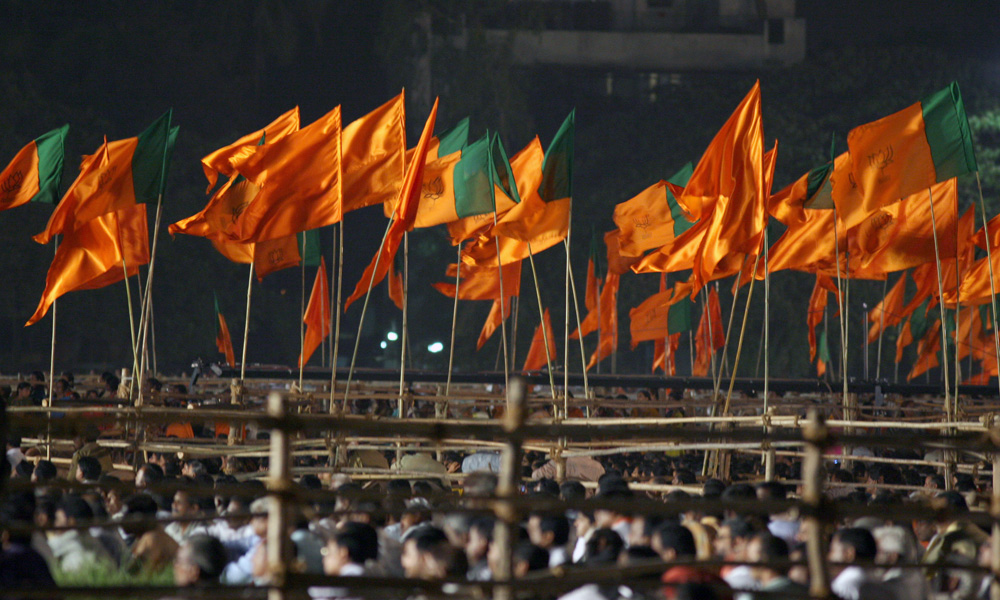By Dr Arun Mitra
In our country with diverse beliefs and traditions coexisting, the promotion of rational thinking and scientific temper is extremely important. Superstitious beliefs, blind practices and rituals are an impediment to the path of development. Scientific temper is not merely knowledge of science, but it is a rational way to analyse the events and it is the quest for deeper understanding. Therefore it is essential for any society to be inquisitive, inclusive and assimilative for advancement. Scientific temper was added in the constitution of our country in the forty-second amendment in 1976, under the Fundamental Duties that states: ‘It shall be the duty of every citizen of India’ to develop scientific temper, humanism and the spirit of inquiry and reform.
In the past few years a narrative is being built by the state to develop tendency to not question or analyse but to follow in blind faith. If official figures are to be believed, 50 crore people not only bathed in the highly polluted water during the Kumbh Mela in Prayagraj, but also drank it, filled it in bottles and took it with them as ‘Charan Amrit’ for others, and gave it to people in their homes and neighbourhood. All this happened when the government bodies, the National Green Tribunal (NGT) and the Central Pollution Control Board (CPCB) had warned that this water was highly polluted and not suitable for bathing, let alone drinking. A similar report was submitted by the Bihar Pollution Control Board which said that the water in Ganga river in Bihar is unfit for bathing at most places.
But despite these warnings people continued to drink water polluted with excreta and urine with pleasure in the name of faith and to achieve celestial gains. Whereas this has exposed the government’s claims about cleaning the Ganga, this has also brought forward how much our society which is strongly influenced by the mythical and unscientific ideas spread by those in power. It is a cause of worry that how people can become so irrational and blockheads.
It is interesting to note that when people were diving deep at Kumbh, the Maharashtra Navnirman Sena (MNS) chief Raj Thackeray, whose socio-political beliefs are well known, raised questions about the cleanliness of river Ganga, and refused to take a holy dip in the river. “Come out of superstition and use your heads properly,” Thackeray urged people. He refused to drink the holy water brought by his party leader Bala Nandgaonkar, from the recently-concluded Maha Kumbh in Prayagraj.
I never felt that Hinduism was in danger as it is all inclusive and ready to assimilate through dialogue. But after the Kumbh Mela, I have developed a fear that Hinduism is entering into a very deep crisis.
Human civilisation has developed around water bodies which were a source of life to them. Thus people paid obeisance to the water bodies at various places in different forms as an expression of gratitude. The Kumbh was originally a centre for people from different faiths to meet with compassion and sacrifice. Even though there is mythical description of Kumbh related to Samudra Manthan, it was king Harshvardhan who regularly organised the bathing practice in Triveni. Chinese traveller Hiuen Tsang documented these events and described Harshvardhan’s generosity and devotion who organized a large religious gathering every five years at the Triveni Sangam between 606 to 647 CE in which people from diverse views and faiths participated. He donated his personal wealth, including clothes and jewels, to the poor and religious institutions. Thus the event was reflection of sacrifice and compassion.
But this time ‘Maha Kumbh” has been used by the state to spread myths and hatred against other religious groups particularly the Muslims. Many Muslims were asked to close down their shops during Kumbh even though there are reports that many of them opened the Mosques to provide space to Hindu pilgrims. Thus the very essence of Hindu philosophy which talks of Vasudhaiva Kutumbakam and global peace has been belied.
“Hindu”, was originally referred to the land and people beyond the Indus River (Sindhu River) by Greeks and Persians in ancient times. It is said that the Persians were unable to pronounce ‘S’ so they spoke it as ‘H’. Thus the word “Hindu” is a Persianized version of “Sindhu”, the name of the Indus River. The term “Hinduism” came into common use only in the 19th century, initially used by outsiders to describe the “ism” of the Hindus and, eventually, by Hindus to differentiate themselves from Muslims and others. The first Indian to use “Hinduism” may have been Raja Ram Mohan Roy in 1816–17. Around 1830, some Indians started calling themselves “Hindus” and “Hinduism” as their religion.
Dr Ritu Khosla in her article on Raja Ram Mohan Roy points out that Roy wanted to prove that blind faith and superstitious beliefs and practices had no basis in the original Hindu religion. According to Roy, another factor responsible for deteriorating political and social milieu was the social decadence of the Indian Society. He wanted to build a new Indian society where principles of tolerance, sympathy, reason, liberty, equality and fraternity would be honoured. (https://ebooks.inflibnet.ac.in/psp07/chapter/raja-ram-mohan-roy-the-first-modern/)
Hindus have lot of diversity in their ideology and practices. Among them are nature worshippers, idol worshippers, and a large number of those who do not believe in any divine power. But all of these were never in opposition to each other, rather lived in harmony. They also assimilated the ideas of people coming from far and wide and enriched themselves from time to time. Hinduism thus developed as strong religion, one that preaches love & compassion and is inclusive. But it also has a weakness, which is dividing the society into higher and upper castes. Almost a quarter of the population was suppressed and deprived of even basic human rights on this ground. But despite all this persecution, this 25% of the population continue to embrace Hinduism although some of them adopted other religions such as Islam, Christianity or Buddhism. Dr. Ambedkar also adopted Buddhism in his last days. But not all his followers joined him.
There is a subtle effort by the government in power to keep the people involved in the myths by repeatedly building and spreading unscientific narrative. This will push the mind set of Hindus to medieval times.
Hinduism is thus endangered not by any outside force but from within by the forces who keep on spreading obscurantist ideas. It is time that we understand their designs and plan ideological struggle. The RSS, the BJP government and their other outfits are hastily working to inculcate such obscurantist ideas and make the people not to think and use their brain logically. What the RSS is preaching is not Hinduism but Fundamental, Communalism, superstitions, obscurantism, violence and hatred. This is not Hinduism but negation of its values and ethos. Their propaganda has to be challenged, otherwise Hindus will be the biggest losers. (IPA Service)

 BJP’s Win In Haryana Local Body Elections Raises Political Concerns For Congress
BJP’s Win In Haryana Local Body Elections Raises Political Concerns For Congress 